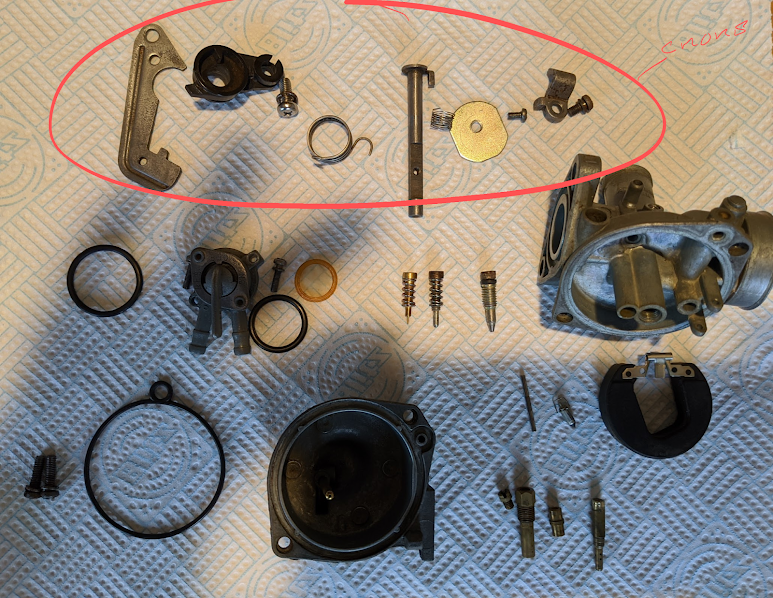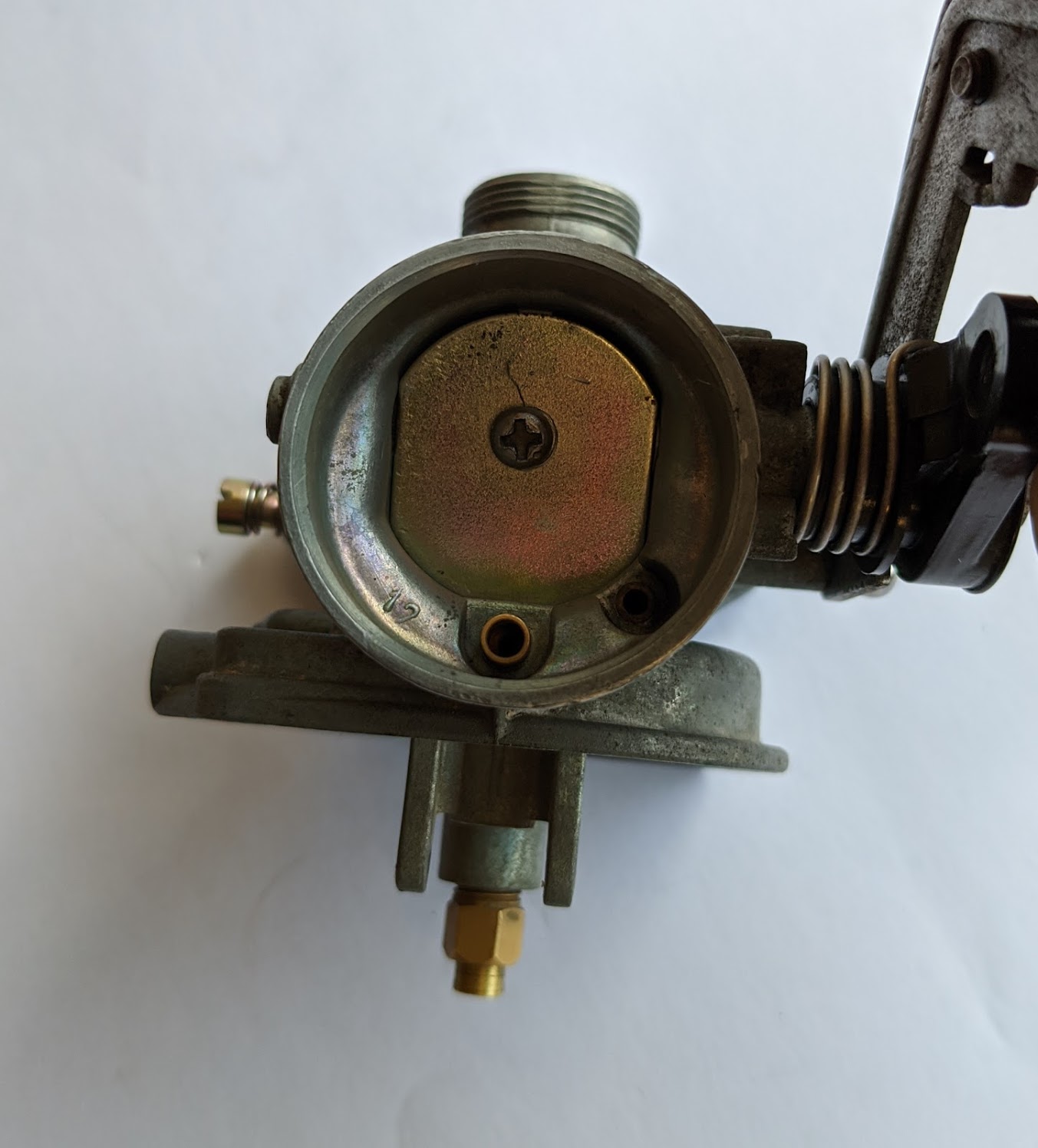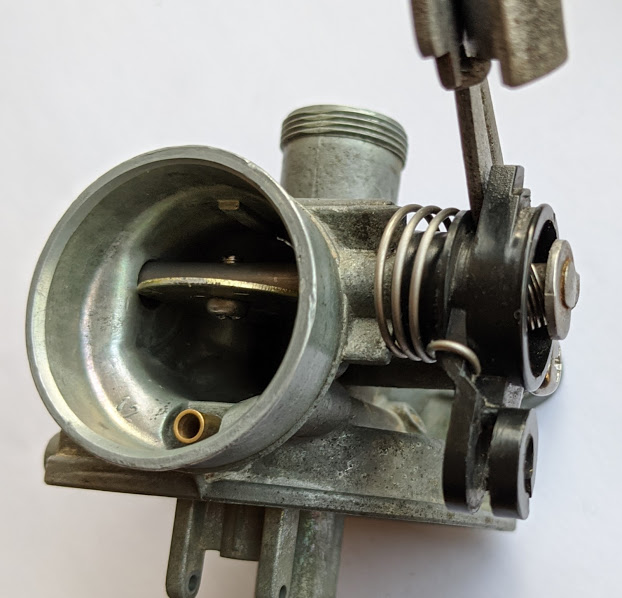Fuel evaporates poorly at lower temperatures and, when the engine is cold, tends to condense on the walls of the intake manifold and cylinder making the engine hard to start.
The solution is to make the mixture richer, either by temporarily adding more fuel or by restricting the amount of air. The mechanism used on this carburettor is a simple butterfly choke that restricts the amount of air when it is used. Here are the bits involved:

The choke plate pivots on a pin inserted through the opening on the filter side . The pin is rotated by a lever on the side of the carburettor – on the z2 model the lever is attached by a cable to a knob situated on the plastic cowl below the handlebars. When the knob is pulled out it pulls on the lever and shuts the choke plate:


As we saw in the previous post, when the bike idles without the choke, each time the piston descends a vacuum is created in the cylinder. The throttle slide limits the volume of air that can enter through the carburettor bore to fill the vacuum and the resulting low pressure area over the pilot jet hole causes the atmospheric pressure in the carburettor bowl to force aerated fuel out of the pilot hole. When the choke plate is closed this further restricts the volume of air entering through the carburettor bore creating a richer mixture.
There are two springs on the actuating lever: the large one returns the plate to the open position when the choke knob is pushed back in. There is a much smaller spring that holds the plate vertically against the stop in the carburettor body. As far as I can work out the purpose of the small spring is to provide just enough resistance to keep the plate vertical but not so much that it can’t be sucked open when more air is needed (e.g if the rider blips the throttle after the engine starts).
Not much can go wrong with this type of choke, unless it get stuck for some reason (with obvious consequences).
You may be relieved to hear the next post – about cleaning and sourcing replacement parts for a Keihin PB25 carb – is also the last post on this topic! If you have stumbled on this post and wonder where it all began, try here.